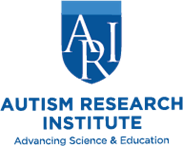Wenn Lawson, Ph.D., discusses gender dysphoria (GD) and how it shapes the lives of many individuals with autism. He outlines a single-minded focus concerning social and cultural constructs of gender identity and constantly reiterates the need for acceptance and understanding. The speaker provides definitions and cites research findings noting the high suicide rate for autistic individuals with GD. Lawson peppers the presentation with personal stories and underscores differences in GD detection between autistic and non-autistic populations. He reiterates the diversity of human existence and provides sources and suggestions for parents and caretakers before the question and answer session.
Learn more about our speaker, Wenn Lawson, Ph.D. HERE
Free certificates of participation are available upon successful completion of a brief knowledge quiz: HERE
Handouts are online HERE
In this webinar:
1:40 – Introduction and background
4:25 – What to expect from the presentation
5:45 – Who Am I? – Poem about gender dysphoria
8:29 – Light beam analogy
10:00 – Narrow interests and sensory inputs
11:15 – Eye contact example
12:33 – Fluid gender understanding in autism
14:00 – Incidence study from Netherlands
14:38 – What is gender?
15:37 – Fetal developmental stages
17:20 – External forces on gender identity
19:08 – Recognising signs and characteristics of GD
20:00 – DSM-5 Gender Dysphoria definition
21:08 – Sensory discomfort and GD
23:36 – Definition of gender dysphoria
24:01 – Neuroimaging study
25:16 – GD and mental health
27:00 – Autism and GD debate
28:28 – Personal experience with sensory issues vs GD
31:34 – Drew’s Planet quote
33:00 – Gender is changeable
35:32 – Gender and an intersex brain
37:42 – Visual – Genderbread Person
40:07 – What needs to be done and explored within GD
42:50 – Autism education and us
44:30 – Example – word choice and narrow focus
45:53 – Conclusion
46:39 – Resources
50:00 – Person stories of transitioning
52:31 – Q & A
Introduction
Lawson outlines his journey with gender dysphoria and autism (1:40). He discusses the reality of autism and its effect on how people view him. Throughout the presentation, the speaker reiterates the importance of understanding that autistic people know what they need and when they are uncomfortable (5:10). The presenter notes that, like autism, gender is more of a spectrum, not simply one thing (7:02). Most autistic individuals, the speaker states, are single-minded, meaning they have narrow interests or focus. Lawson relates neurotypical focus to a wide beam of light (e.g., a lighthouse) and autistic focus to the light of a large torch or flashlight. He explains that a wider view (light beam) creates contextual understandings of broader circumstances, unlike a narrow or single-minded view (8:00).
“This means the necessity of separating things into social, public, and private boxes presents a challenge for many of us because it’s hard for us to separate the wider aspects, which let us know that [those boxes or categories] are different (8:29).”
Cultural understanding
Because our concepts of gender are very cultural, he continues, they are difficult for individuals with autism to access. Therefore, most autistic individuals experience and understand gender differently from (often in contrast) the wider population (13:07). Lawson cites research findings that reveal one in eight autistic people live with gender dysphoria (12:33). Gender Dysphoria (GD) is a condition where a person experiences discomfort or distress because there is a mismatch between their biological sex (assigned at birth according to genitalia) and gender identity/brain identity (14:38) (assigned during fetal development) (23:36). GD is, therefore, not pathological and cannot be a mental illness. The speaker notes that gender dysphoria is not diagnosed but occurs when chromosomes do not match genitalia. (39:47). Lawson outlines physical and neurological fetal development stages (15:37) and discusses which step he thinks GD occurs (16:37).
The speaker cites studies that found GD is more likely to impact autistic people than non-autistic populations (27:00). He considers how the clash of cultural understanding and autistic gender experiences often leaves autistic individuals with GD underrepresented and not heard. The suicide rate of autistic people with GD is 40%, making it clear that we must start doing something different (18:37). As similar studies are published, Lawson affirms that we need to build an understanding of what this means for the autistic population so we can create proper support.
Recognizing gender dysphoria
Recognizing signs and characteristics of gender dysphoria can be difficult as we often try to understand the spectrum of gender and sexuality within a falsely dualistic narrative (19:08). Sensory difficulties and discomforts associated with autism can also make it difficult for someone to determine whether what they are feeling is rooted in their body, gender, or sexuality (21:08). Lawson remembers his life as a woman and details the comfort he has found since he learned to differentiate sensory and internal gender-related issues (22:00). The presenter touches on intersex brains (35:32) and explains that he is happy as both male and female (37:19). Therefore, he continues, we need to watch and listen to young people with purpose and intent and remember that everyone is a mix of masculine and feminine qualities (33:00).
Lawson suggests exploring gender dysphoria through honest and trusting conversations (40:07). He highlights the need to investigate special interests and obsessions and provides observations and clues for parents. The speaker reiterates that GD is much easier to spot in neurotypical individuals as they have fewer sensory challenges and a capacity for broader, contextual understanding (41:37). The future of autism education and accommodation will involve all of us, children and adults, says Lawson (42:50). The presenter gives an example of single-minded language interpretation and reiterates the importance of understanding the needs of autistic people so we can change how we accommodate them (44:30).
Conclusion
The speaker re-emphasizes the diversity inherent in human gender and sexuality (45:53) and highlights the difference between propensity for toys of the opposite gender and GD (30:25). Throughout the presentation, Lawson urges viewers to shed prejudices and ensure individuals are loved and accepted. He encourages people to share their experiences and to reconsider our definition of a human being. Lawson provides resources for stories and advocates (46:39) and recounts how he and his wife navigated GD and other transitions together (50:00) before opening the questions and answer session (52:31).
Published: 01/04/2019
 Psychologist, lecturer and author, Wenn Lawson, Ph.D. has run his own business for 22 yrs. At 2 yrs, he was misdiagnosed as intellectually disabled, at school of being incapable of doing as he was told, at 17 yrs misdiagnosed with schizophrenia; in and out of Mental Health Institutions; eventually age 42yrs, diagnosed with an autism spectrum condition (ASC), ADHD, dyspraxia and learning difficulties. Dr. Lawson is currently a Teaching Fellow with Birmingham University’s online Masters autism course. He resides on the Autism Open Access board and the board for SEAL(Community College in Warrnambool, Australia), & the ICAN board, South West (Australia). He is participant and advisor for Autism CRC, Australia and he has written numerous books (and papers) on ASC.
Psychologist, lecturer and author, Wenn Lawson, Ph.D. has run his own business for 22 yrs. At 2 yrs, he was misdiagnosed as intellectually disabled, at school of being incapable of doing as he was told, at 17 yrs misdiagnosed with schizophrenia; in and out of Mental Health Institutions; eventually age 42yrs, diagnosed with an autism spectrum condition (ASC), ADHD, dyspraxia and learning difficulties. Dr. Lawson is currently a Teaching Fellow with Birmingham University’s online Masters autism course. He resides on the Autism Open Access board and the board for SEAL(Community College in Warrnambool, Australia), & the ICAN board, South West (Australia). He is participant and advisor for Autism CRC, Australia and he has written numerous books (and papers) on ASC.
The Science of Making Friends for Autistic Youth: Lessons from the UCLA PEERS Program
Free webinar at 5 p.m. Eastern time (US), Wednesday August 28, 2024 Learn research updates on evidence-based strategies to support adolescents and young adults develop social skills that encourage lasting friendships.
Study finds that employees with autism are less likely to exhibit “bystander” effect
Employees with autism spectrum disorders (ASD) may contribute to businesses in a unique way because they are less likely than neurotypical individuals to exhibit the “bystander” effect, according to a new
Autistic adults show enhanced generosity toward strangers
Adults with autism spectrum disorders (ASD) tend to be more generous to strangers than their neurotypical peers are, according to new research. In the study, Paul Forbes and colleagues explored differences
Gender Discomfort and Autism
"I think society has an expectation where you have to be male or female, or you can be somewhere in between [...]. But they don't get that, actually, there are many genders and
Delayed and Missed Diagnoses of Autistic Women
Hannah Belcher, Ph.D., Autistic researcher, speaker, and author, discusses the often late and missed diagnosis of autistic females. She dives into the gender gap inherent in autism research, assessments, and clinical understanding, demonstrating
Back-to-School Resources
Whether you’re a parent preparing a child for grade school or an adult transitioning into or out of college, the back-to-school season can present unique challenges for families and individuals with autism.







